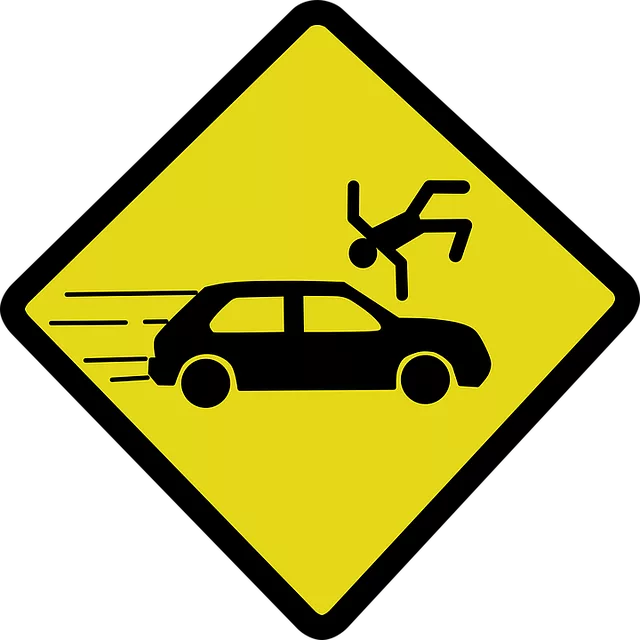In Manhattan and Queens, understanding cyclist rights and responsibilities is crucial for preventing Workplace Injuries in New York City Queens. Cyclists and motorists must follow state laws granting cyclists full lane access, turn signals, and red light/stop sign obedience. Cyclists should wear reflective clothing while drivers must yield during turns, provide 3 feet of clearance when passing, and stay alert for sudden lane changes. Employers play a vital role in creating safer conditions by providing secure bike storage, lighting, defensive cycling training, flexible work arrangements, and advocating for dedicated bike lanes to reduce workplace injuries among cyclists.
Cycling has become a popular mode of transportation in Manhattan, but understanding the rules of the road is crucial for both cyclists and drivers. This article explores the cyclist right of way regulations in Manhattan, focusing on how they can help prevent common workplace injuries in New York City and Queens. By navigating these guidelines, cyclists can enhance their safety and reduce risks associated with urban commuting, ensuring a smoother and healthier experience in the bustling city environment.
- Understanding Cyclist Right of Way Rules in Manhattan
- Common Workplace Injuries for Cyclists in New York City & Queens
- Preventing and Navigating Cycling-Related Workplace Injuries
Understanding Cyclist Right of Way Rules in Manhattan

In Manhattan, understanding cyclist right of way rules is crucial for both cyclists and motorists to prevent workplace injuries in New York City Queens and other areas. Cyclists have the same rights and responsibilities as vehicle drivers, according to state law. This means they can legally occupy a full lane when necessary, signal turns, and stop at red lights or stop signs. Drivers must yield to cyclists when making turns, and pass them safely with at least three feet of clearance.
Knowing these rules is essential for navigating the city’s bustling streets. Cyclists should always be aware of their surroundings, use hand signals clearly, and wear reflective clothing or gear to enhance visibility. Motorists, on the other hand, need to exercise extra caution in areas with high cyclist traffic, observe posted speed limits, and remain alert for cyclists who may suddenly move into a lane. Both parties must respect each other’s space and follow traffic laws to ensure safe commuting and reduce the risk of accidents leading to workplace injuries.
Common Workplace Injuries for Cyclists in New York City & Queens

Cyclists navigating Manhattan and Queens face unique risks on the road, leading to a variety of workplace injuries. Due to the high density of traffic and often narrow streets, accidents involving cyclists are not uncommon. Common workplace injuries for cyclists in New York City and Queens include road rash, fractures, and head trauma. These incidents can occur due to driver negligence, poor road conditions, or inadequate cycling infrastructure.
Cyclists may also suffer from soft tissue damage, such as muscle strains and sprains, particularly if they are involved in frequent stops and starts in heavy traffic. Additionally, the lack of protective gear for cyclists contributes to the severity of injuries when accidents happen. Awareness and safety measures are crucial for both cyclists and drivers to mitigate these risks and ensure a safer environment for everyone on Manhattan’s and Queens’ roads.
Preventing and Navigating Cycling-Related Workplace Injuries

In New York City, including Manhattan and Queens, cyclists are an increasingly common sight on the roads. While this promotes a healthier lifestyle and reduces traffic congestion, it also brings unique challenges, particularly regarding workplace injuries. Preventing such incidents is paramount for both employees and employers alike. Cyclists face distinct risks compared to traditional commuters, from navigating busy city streets to dealing with unpredictable weather conditions.
To mitigate these risks, employers can play a crucial role in fostering a safe environment. This includes providing secure bike storage facilities, ensuring proper lighting around parking areas, and offering training on defensive cycling techniques. Additionally, implementing flexible work arrangements and dedicated bike lanes can significantly reduce the likelihood of workplace injuries among cyclists in New York City, Queens, and beyond.
Cyclists navigating Manhattan’s bustling streets must be aware of their rights and the unique challenges they face. Understanding the right of way rules is crucial for both cyclists’ safety and a smoother commute. By recognizing potential workplace injuries specific to NYC and Queens, cyclists can take proactive measures to prevent accidents. Armed with knowledge about prevention and navigation strategies, cyclists can confidently cycle in this vibrant city while minimizing risks associated with Workplace Injuries in New York City Queens.
